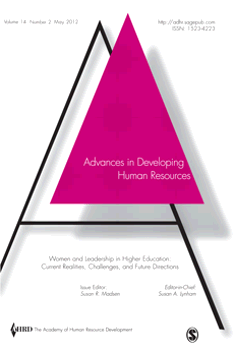The Diversity Challenge: Part 2 of 5
Editor’s note: Today we’re continuing our series on diversity, targeting specific questions to invite discussion and exploration of related topics. If you have a question that you’d like to see addressed, add it in the comments below!
***
Part 2: Why do men outnumber women in academic leadership positions?
It’s been almost fifty years since gender discrimination in employment was outlawed in the U.S., but it’s been a lot longer since many of our nation’s patriarchal academic institutions were established.
Niki Murray, Marianne Tremaine, and Susan Fountaine, all of Massey University, published “Breaking Through the Glass Ceiling in the Ivory Tower: Using a Case Study to Gain New Understandings of Old Gender Issues” in the May 2012 issue of Advances in Developing Human Resources.
The abstract:
Universities are patriarchal institutions. More males reach upper levels of the academic hierarchy than females. The authors were concerned that their university had a marginally lower percentage of female professors than others in their country and used a survey and interviews to explore the facts behind the figures.
The Solution.
Statistics showed that though fewer females applied for promotion, proportionately more female applicants were successful. The authors researched what helped female professors and associate professors gain promotion and explored views on the spillover between work and family/community roles. Promotion enhancement factors included encouragement from department heads and senior colleagues. Family/community roles were seen to spillover positively to work, though work could negatively affect time for family and community involvement.
The Stakeholders.
These findings could encourage proactive mentoring of female academic staff by managers, and increase HR and HRD support for family-friendly policies and training programs.
To learn more about Advances in Developing Human Resources, please follow this link. To receive email alerts about newly published articles, click here.
Up next in the series: Which “minority” group is possibly the most underrepresented in the HRD diversity literature?
































































































